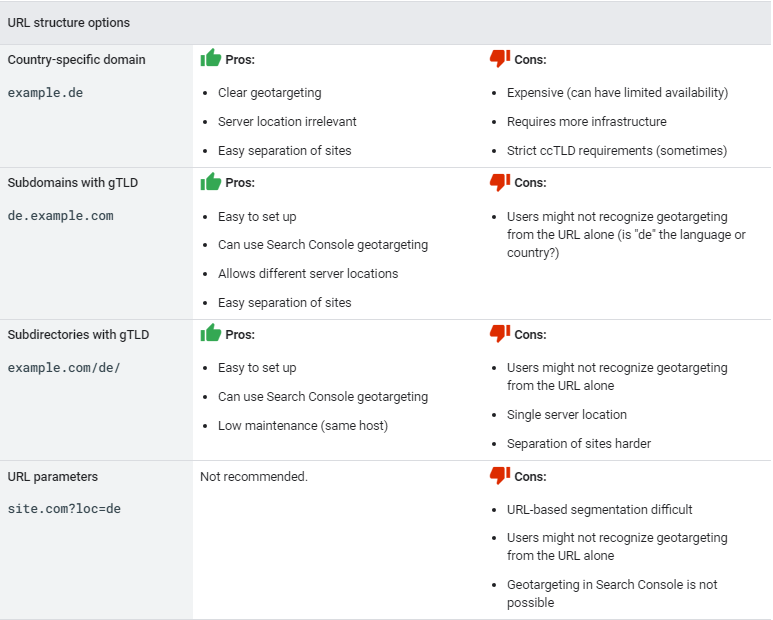Webshops and companies are increasingly looking for opportunities abroad. And so they have to adjust the website. A language has to be added. You can choose to create a new website, but the most logical step is a 'language menu'. The user can choose his or her language. But what about findability? Which version does Google see? Or does Google see both?
In Google's documentation we find a clear answer about the differences and the best way to make a website or webshop multilingual.

Google shows the different ways of setting up a multilingual website. We can draw the conclusion here that the domain name does not matter much.
A common solution is for companies to put the language after the domain name, such as example 3 in the photo above. Google gives the disadvantages that the 'Single server location' is not useful. But in fact this doesn't matter. Nowadays web hosting packages are redundant. So in the event of a failure, another server picks it up.
In addition, the 'Separation of sites harder' is a disadvantage. Or not? Because isn't it the intention to keep the website as much as possible as the original? If that is the case, then this is not a disadvantage but a major advantage.
So our preference (as you may notice) is the third version. You can keep your own domain name, and it makes maintenance a lot easier. We do recommend registering your domain name in multiple domain name extensions. So for example: www.jebedrijf.nl, www.jebedrijf.de (Germany), www.jebedrijf.be (Belgium) and so on. You can then link this to the correct website.
And what about findability?
It is important to let Google know that your website or webshop has multiple languages.
- 'Hreflang Tag'
The first way to let Google know which versions are available is to place the 'Hreflang Tag'. In this tag (placed in the of the website) you indicate which version of the website Google visits.
Google has all kinds of bots that index your website. Thanks to the Hreflang Tag, the bones know which language they see. - The site map
Also not entirely unimportant. Thanks to an XML sitemap you can indicate to Google which pages your website or webshop has. You can immediately supply the multilingual versions here. Then Google immediately knows that they exist!
And then it's up to you. Adapt the content to the country's target group. The technical part is ready, now it's time to warm up visitors abroad.
Do you have any questions or comments about this subject? Feel free to send us a message!
